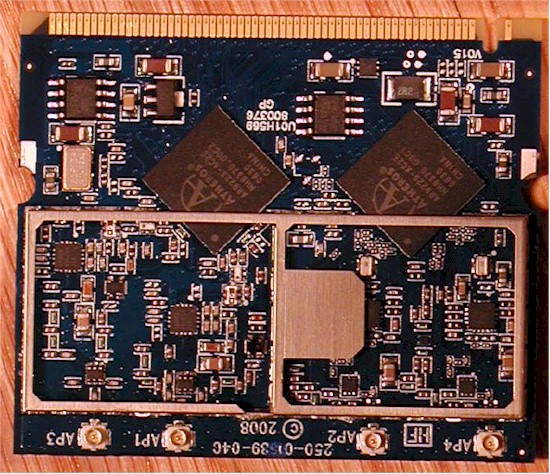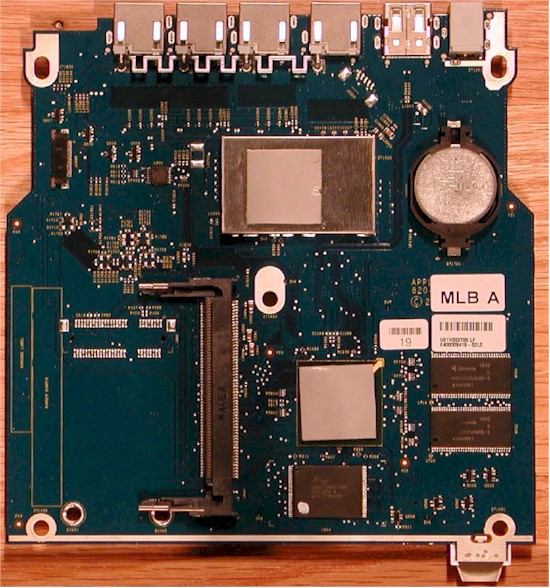I’ve been getting an unusually high number of requests for a review of Apple’s latest tweak of its Airport Extreme. But you probably won’t be getting a review, at least not any time soon.
It’s no secret that Apple is pretty selective about who they provide review product to. And while SmallNetBuilder was once on that list, we seem to have fallen off of it.
Since we reviewed the original, single radio Airport Extreme back in fall 2007, I have asked to review the Time Capsule and dual-radio Airport Extreme. Apple responded to my requests, but review product never showed up, despite repeated follow-ups.
I have sent another review request to Apple for the latest version of the Extreme. But I suspect that I won’t be getting review product this time either.
Why don’t I just buy the product myself? Well, it’s true that I could, and I have done this very occasionally in the past. But, frankly, I don’t like having to dig into my own pocket to provide exposure for a manufacturer who can well afford the marketing budget to provide product for review. And there are plenty of other products to review.
I’m a bit baffled, anyway, about all the excitement for what is a minor tweak to the Extreme. I think Glenn Fleishman’s piece that erroneously reported (and has since been corrected) that Apple had enabled three-stream (450 Mbps maximum link rate) capability in the "improved" extreme may have had something to do with it.
But Apple has not released a three-stream Airport Extreme. And, even if they had, you would get no benefit from it unless you also had three-stream enabled clients, which aren’t yet available. What Apple has probably released is an Extreme with a radio module that has two 3×3 (that’s three transmit and three receive channels) radios on it and a third antenna added for each radio.
Apple has asked the FCC to block the External, Internal and Test Setup Photos and User Manual for 180 days for the new Extreme (Apple Product Number MC340LL/A), which they are allowed to do under FCC rules. So I can’t say for sure what is in the tweaked Extreme unless I buy one and open it up.
But the photo in Figure 1 is the radio module from the just-retired simultaneous dual-band Extreme. You can see the two Atheros single-chip radios: an AR9220 dual-band, 2×2 for 5 GHz; and an AR9223 single-band, 2×2 for 2.4 GHz. Note the two antenna connectors for each radio.

Figure 1: Old Simultaneous Dual-Band Airport Extreme radio module
This module slides into a connector on the main board (Figure 2), so it could be an easy matter to swap it out for a new 3X3 one. But since Atheros doesn’t have 3X3 equivalents of the AR9220 and AR9223, the internal changes could be more extensive.

Figure 2: Old Simultaneous Dual-Band Airport Extreme main board
Since there is limited space, it might be that Apple had to either change chip vendors, or move the radio into the main board, which would also probably reduce manufacturing cost (and raise Apple’s margin since the $179 price is staying the same).
The FCC photos don’t show any other internal detail, so I can’t say whether the third antenna is already in the enclosure. But if the radios have been bumped up to 3×3, then new antennas for each radio will be needed.
The real story here is that I suspect Apple is positioning itself to either scoop competitors or be among the first companies to ship a real three-stream N router (and maybe even three-stream clients) as soon as product clears Wi-Fi Certification testing. After all, Apple quietly seeded draft N capability in its MacBooks and PowerBooks and then released free upgrades that enabled the capability when the original Airport Extreme was announced. The coming weeks could see this other shoe drop.
But even without three-stream N, I have found in past testing that a third antenna, used just for receive in dual-stream routers, can provide improved performance. But, like any wireless performance claims, you’d be advised to take Apple’s "50 percent better performance and up to 25 percent better range" assertions with the usual bucket load of salt.
